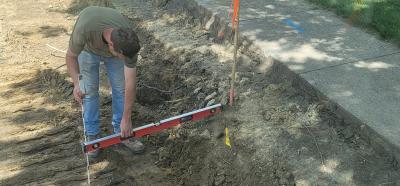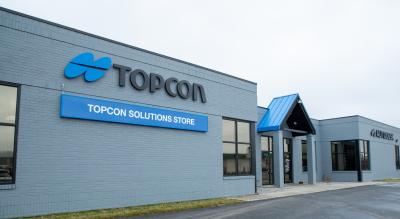As part of a massive project involving the Brooklyn-Queens Expressway (BQE), the New York State Department of Transportation (NYSDOT) is rebuilding, improving and reconfiguring the section running from 61st Street to Broadway, updating the infrastructure to meet current standards in bridge safety, roadway and operations.
Prime contractor Perini/Tutor-Saliba II JV, made up of Perini Corporation, based in Peekskill, N.Y., and Tutor Saliba, headquartered in Sylmar, Calif., are overseeing the work on this stretch of the expressway in a joint venture.
Funding for the $125 million job is split between New York State, which provided 10 percent, and the Federal Highway Administration, which contributed 90 percent.
The work already completed and that which remains to be done indicate the scope of the ongoing Broadway to 61st Street section.
The first phase of the job ran from March 2005 to March 2006, and was devoted to preparatory work including constructing temporary roads, placing temporary barriers along the median between 69th Street and Broadway, utility relocation and the removal of bridges crossing the expressway at 70th Street and 41st Avenue and erection of a temporary bridge at Roosevelt Avenue.
During the second preparatory stage between May 2005 and June 2006 work continued on bridges on Roosevelt Avenue, 41st Avenue and Queens Boulevard, as well as paving between 69th Street and Broadway and the realignment of CSX railroad tracks.
The third phase ushered in the start of construction. June 2005 to July 2006 saw the building of a temporary detour road along the CSX Railroad as well as retaining and noise walls, bridgework at a number of locations — Roosevelt Avenue, Queens Boulevard, Broadway, 70th Street, 41st Avenue and Woodside Avenue — and reconfiguration of the intersection of Broadway and 37th Avenue.
The next stage of construction ran from August 2005 to July 2007, during which work continued on the bridges, concrete pavement and drainage were installed on the eastbound lanes between Broadway and 70th Street, and noise and retaining walls were erected.
The third construction phase lasted between January and April 2007. It featured reconstruction of the elevated subway structure at Queens Boulevard and Roosevelt Avenue, and more bridge, utility, drainage and noise wall work.
Current Construction
Currently, the fourth stage of construction is well advanced. Begun in May 2007, it involves modifying the elevated Independent Rapid Transit structure, temporary detour roadway and bridge removal and ramp and bridge construction. Utility installation, architectural treatments and landscaping are being carried out project-wide.
Running concurrently with stage four, the fifth phase of construction began in January 2008. This includes installation of protective screening, wall repairs and median, concrete and shoulder work. The Roosevelt Avenue bridges spanning the BQE and CSX Railroad are completed and the 65th Place bridge has been reconstructed. East- and west-bound paving on the expressway and related work between Broadway and 61st Street will soon be completed, along with landscaping, water main upgrading, local street paving and striping.
Part of the east- and west-bound concrete paving operations included the use of Master Builders “4x4” high-early strength concrete, which attained 3000 psi compressive strength in just four hours after placement. This facilitated Maintenance and Protection of Traffic requirements to minimize restricted lane closures, thus minimizing inconvenience to the traveling public.
“Currently the project is 98 percent completed, including seven bridges, five retaining walls, concrete pavement, noise walls and soldier piles,” said Jesse Jameson, project manager at Perini Corporation. “Electrical work, landscaping, milling and paving, concrete sidewalks and parapets remain.”
Perini/Tutor-Saliba II JV has 45 employees working on the job. Its equipment fleet includes Caterpillar 325, M320 and M315 and Komatsu PC200 and PC400 excavators. Caterpillar D5 bulldozers and 446 and 450 loader/excavators also are being utilized, as are Komatsu WA 380 and WA 420 wheel loaders. Bauer BG 18 and BG 24 drilling rigs, a Link-Belt 8040 crane and Liebherr LTM 1120 hydraulic cranes are at work, along with a Bidwell 48-in. deck finisher and Schwing concrete pumps.
The Team of Subcontractors
Major subcontractors for the job included Our Rental Corporation of West Babylon, N.Y., which supplied concrete pumps and telebelts. Newborn Construction, Inc., based in Center Moriches, N.Y., handled asphalt paving and Femi-9 Contracting Corporation of Copiague, N.Y., carried out milling and deck grooving work.
Peduto Construction Corporation, located in New Rochelle, N.Y., was Perini’s water main contractor and Sweet Hollow Management Corporation of Melville, N.Y., was responsible for landscaping. Electrical work was performed by Wellsbach Electric Corporation, based in College Point, N.Y., while Takbeer Enterprises Inc. of Brooklyn, N.Y., carried out what project manager Jameson described as “a massive amount of concrete repair work.”
Probek Construction Corporation, based in Sayreville, N.J., was subcontracted for the bridge deck saw cutting for concrete deck removal as well as the core drilling and roadway saw cutting on and along the expressway.
“We carried out various types of saw cutting applications for the removal of the bridge overpasses, wall foundations and exit ramps, and core drilled holes for new fence protection up and down the BQE,” said Mike Provini, CEO of Probek Construction. “We used Diamond Products Core Cut CC7100 78-horsepower diesel walk-behind saws and due to the variable slab thicknesses used 26-, 30-, 36- and 42-inch diamond blades for the flat saw cutting. We also used Core Bore M-2 drill rigs for the coring operation and Core Cut CC1600 hydraulic wall saws to complete the wall foundation saw cutting.”
Due to the tough job conditions and strict job planning, Probek Construction and Perini Corporation had to coordinate the scheduling of the work. Some was performed during regular day shift hours and some had to be performed during night shift hours due to the lane closure restrictions. Probek Construction would dispatch the manpower and equipment necessary to complete the work required in a safe and timely manner. “With our experienced personnel, a large inventory and the latest in equipment technology, we knew we would bring the project in on time and within budget for Perini Corporation,” Provini observed.
The original contract amount for this project was $285,000 and along with change orders for additional work is now almost complete. Perini Corporation praised Probek for its work on this part of the project, citing no delays, 100 percent cooperation and attention to detail and planning, all of which increased the profitability of the job.
Supporting the EL
Part of the project involved the temporary support and reconstruction of N.Y. City Transit’s Number 7 elevated structure. “It’s a three-layer structure, with the BQE at grade level, Roosevelt Avenue above it and seven subway lines on top,” Perini’s Jameson explained. “The Number 7 line runs from Flushing-Queens to Manhattan and we had to temporarily support the tracks while reconstructing the structural steel to fit the realignment of the BQE. The elevated line was supported by columns every 59 feet, the new realignment changed the column spacing to 75 to 100 feet apart.”
However, during erection of these temporary supports it was discovered that the elevated line’s original columns had shifted. What Jameson termed “Yankee ingenuity” solved the problem: The new carrier girder supports were made 4 in. (10.16 cm) longer and the field connections to the existing support beams field drilled at the final locations. The necessary engineering and related work caused a delay of about a month in completing this part of the job.
Numerous other problems also have been encountered. “Always problems, a daily occurrence,” Jameson observed. One notable incident was an accident involving an 8,000-gal. gas tanker that caught fire. “The wood deck caught fire and the steel girders melted, bringing down the bridge, which delayed the opening of the temporary bridge over Roosevelt Avenue. Four or five less spectacular accidents have occurred, including truck rollovers,” he added.
Summing up, Jameson observed, “Overall, the project will be completed on time, with zero claims and within the NYSDOT budget. Effort by the management, the NYC labor unions, suppliers, subcontractors and equipment representatives made this success possible.”
About the Companies
The Perini Corporation provides building and civil construction, design-build, management and general contracting services. Incorporated in 1918 as the successor to businesses providing construction services since the mid-1890s, the corporation is headquartered in Framingham, Mass.
Serving national and international clients, past projects include work on New York’s Brooklyn, Queensboro and Triboro Bridges, the New York State Thruway and LaGuardia Airport. In addition the corporation was responsible for design-building the Hudson-Bergen Light Rail Transit System. Perini also rehabilitated columns and foundations for the Chicago Transit Authority’s South Loop Connector and constructed the substructure of a bridge crossing the Missouri River near Kansas City, Mo., as well as the traffic control tower at Lambert International Airport in St Louis.
Founded in February 2004 by Mike Provini, his son John and Paul Zoubek, the principals of Probek Construction Corporation have a combined 70 years of experience in the construction industry. Based in Sayreville, N.J., the company provides full-service concrete cutting and coring and specializes in slab sawing, wall sawing, wire sawing, bridge deck sawing, core drilling, asphalt sawing and sealing, crack sealing and polymerized joint sealing. They assisted in the removal of the World Trade Center’s Freedom Stairs (to be displayed in the WTC Memorial Museum) by using core drilling, wall sawing and wire sawing techniques. They also core drilled holes in the slurry walls on the same project for test analysis. Other recent jobs include core drilling for new rebar installation at the Prudential Center in Newark, N.J.; bridge deck saw cutting, joint widening and silicone sealing on New York’s Manhattan Bridge; and road saw cutting of 12 bridges and roadways as well as sawing and sealing of new asphalt on the I-278 rehabilitation project on Staten Island. CEG
Today's top stories















